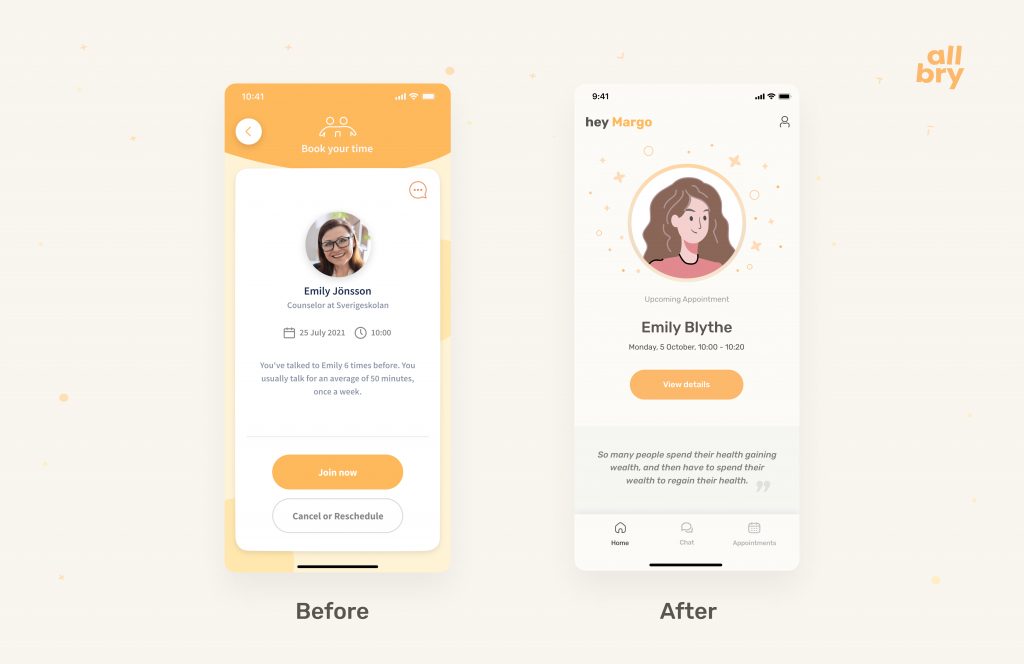Developing digital products in healthcare is more challenging than in any other sector. A team developing a product in digital health takes responsibility for people’s lives and health just like surgeons or other doctors.
Healthcare has been actively moving into the digital world, but digital health startups continue to fail at an alarming rate compared to digital initiatives in other sectors. Why is the healthcare industry so different from the rest? First, the “move fast and break things” approach of the tech world just doesn’t work in the industry where people’s lives are at stake. Second, many founders lack the experience to evaluate specific healthcare workflows or fully understand the customer journey. Some fail because of poor budgeting and incomplete vision of the end-product; others make the fatal mistake of focusing on the technology rather than the consumer.
As healthcare product developers ourselves, we want to provide you with some take-aways and lessons we learned to prepare you for some of the obvious and “not so obvious” mistakes you’re likely to commit along the way.
Build with scalability in mind
When you create your product from scratch, it’s important at the very beginning to define who your end-users are to maximize the benefits you are going to deliver them with your app. Note that your product might be used not only by patients and clinicians but also by hospital administrators, insurance companies, etc. At this stage, it’s important to prioritize the functionality to make the MVP (minimum viable product) the most valuable for your users to avoid wasting your time and budget on creating unnessacery features.
But there is one important point. If we want to achieve greater adoption and greater impact of the digital health tools we create, we must move from building minimum viable products (MVPs) to building scalable ecosystems of products and services. This requires a mindset shift towards a more holistic approach that takes into account many implications our product will have on the lives of all users.
To build a scalable product, make sure you conduct a discovery session, do product research, plan features, and lay down the app architecture.
Focus on design and emotions
As statistics show, one of the key reasons why people stop using apps is bad user experience, only preceded by security issues.
Designing products and services for digital health is challenging. The healthcare industry is a highly regulated, complex ecosystem with many stakeholders like physicians, insurance companies and governments, each playing an integral part in the therapy flow.
So, designers in healthcare must not only understand patients’ needs and frustrations but also consider the interests and motivations of other parties involved to ensure the maximum effectiveness of the app.
This requires a great deal of understanding of how doctors make decisions and how patients feel and interact with the interface. It is important that you keep in mind two simple rules here:
- Delivering the right information at the right time streamlines the clinician’s workflow.
- Delivering the right amount of information in the right tone improves patient engagement.
Also, don’t forget about the importance of evoking the right emotions. No one enjoys going to the hospital. That’s a fact. Visiting a doctor often brings extreme fear and anxiety to a patient, which is then exacerbated by how an average hospital looks and feels like - cold, sterile and gloomy - not the best trigger of pleasant emotions.
Therefore, it is critical to design your product with the patient’s feelings in mind, making the interface warm and welcoming so that your end-user will engage with your app continuously, without anxiety and fear.

Use data-driven approach from one release to another
Intuition is good, but data is better. Test hypotheses before launching full-fledged development. Users know better than you what they need, so the sooner you start testing your product, the more money you can save.
Recently we had a case while partnering up with a company on the creation mental health product. There were originally a lot of ideas that we’d like to implement, but no one knew what would work, as the mental health market was already overheated. Therefore, we took a data-driven approach: we checked statistics and carried out a few surveys, which finally helped us to understand what OUR users NEEDED and not users of other mental health apps. This helped us to save money by not wasting time on the implementation of what our users did not need or what wasn’t our priority.
Take care of privacy, security, and regulatory compliance
As statistics show, security issues is the key reason why people stop using apps.
Just like digital products from the financial sector, digital health products must be carefully secured.
Because digital healthcare products process vast amounts of personal information, it is crucial to undertake necessary measures and introduce a number of protection mechanisms ensuring the comfort and safety of your users. As there is no room for errors when people’s safety is at stake, digital health app creators act both on a technical and legal level.
From a technical standpoint, several good practices can be incorporated to provide users with the highest level of protection. One of them is using the End-to-end encryption (E2EE) method, preventing third parties from accessing the sensitive data while it’s transferred between different systems or devices. In short, only the users actually involved in communication can obtain information.
Another common procedure is implementing multi-factor authentication (MFA) to create an additional layer of protection. This way, users can only access their accounts after delivering at least two pieces of personal information, which minimizes the risk of breaches and data leaks.
When it comes to legal aspects that need to be taken into account, it boils down to being compliant with regulations and directives in force in particular regions of the world. Depending on the geographical location and targeted markets, healthcare providers follow different sets of rules. For the United States, it’s The Health Insurance Portability and Accountability Act of 1996 (HIPAA), for Canada - Personal Information Protection and Electronic Documents Act (PIPEDA), and the inhabitants of European Union countries need to comply with GDPR guidelines.It is also worth noting that there are ISO standards for medical devices that are applied globally. All those regulations may differ from one another, but their ultimate goal stays the same - protecting sensitive data.
It might be difficult to keep track of all these healthcare laws. It is even more challenging to apply them to product development and market-specific design. The main reason many companies fail at the legal point is the lack of experience, which leads to:
- Sanctions from government agencies for improper enforcement of the law (for example, they forgot to set up automatic deletion of data in chats, which should be in place according to GDPR);
- Budget overruns and longer time to market.
No one knows what is right and what is wrong. Solutions must be developed out of a deep understanding of patients’ needs, pain points, motivations, and beliefs, and not out of the recent technological trends. Some methods and technologies may be fashionable but not at all suitable for further adoption of the product.






